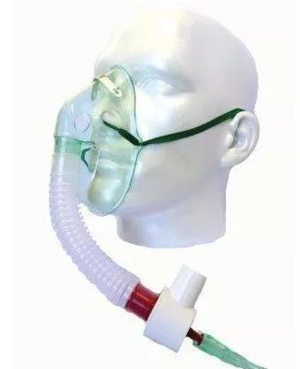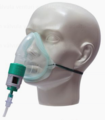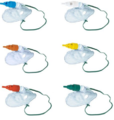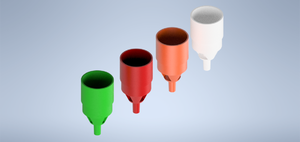Venturi valves
Contents
Project manager
| Maker | Image | Profile |
|---|---|---|
| Figueredo David |
Presentation
Attending to the global warming, in this project we want to combine our efforts to fight against the COVID-19 virus by creating a Venturi Valves system, used in the hospitals, which ones are starting to become scarce due to the number of patients. Due to this,we propuse to design and manufacture of said valves, using the 3D printing technology with the help of the UtopiaMaker community around the world.
Designs and blueprints
Design repository link: https://www.thingiverse.com/thing:4230375/files
Context
The main problem with th COVID-19 is the damage in the lungs, in short words this causes the alveoli get fill with mucous, hindering the breathing process (as a flu)
To help in the Breathing process, Venturi valves are used, and their function is increase air pressure and provide more oxygen to the patient, generating positive pressure.
For their operation, these valves are based on the venturi effect and Bernoulli's fluid law.
Analysis
In the next picture the breathing valve is show:
- In the joint P2 there is a negative pression, it makes than the enveriromental air gets into the valve and mix with the oxygen, decreasing oxygen concentration.
- If the A2 air inlet area gets bigger, more ambient air will enter to the system, decreasing oxygen concentration.
Considerations
There are two different types of valves: adjustable O2 concentration and fixed concentration.
For design purposes, it is easier to have fixed concentration valves, which can be changed depending on the needs of each patient.The manufacturers of these valves present a table where they specify the oxygen concentration and the flow rate required that the oxygen must flow, depending on each type of valve, as shown below:
The oxygen concentration depends mainly on the area A1, where the oxygen enters, and the area A2, where the ambient air enters.
The next pictures will give us an idea of some important parameters to have in count:
A 6mm diameter hose will be used for oxygen inlet and the output is for the breathing mask, that has a 22mm diameter hose. Taking in count this information, the next design suppositions can be made: A 6mm diameter hose will be used for oxygen inlet and the output will be for the breathing mask, that has a 22mm diameter. Taking in count this information, the next design suppositions can be made:
- As the hose is 6mm and assuming a wall thickness of 2mm, this would provide a diameter range for A1 between 4mm and 1mm; this taking into account that it is not possible to print a diameter smaller than 1mm with a conventional printer.
- With a larger diameter 1 (D1), there will be more oxygen flow to the valve, this as long as the air flow is higher.
- It is known that with a smaller A2 area, less ambient air will enter and the oxygen concentration will be higher, thanks to getting all the oxygen directly from the machine.
With those assumptions, 4 types of valves were designed:
- White: oxygen concentrations expected between 24% and 28%
- Orange: oxygen concentrations expected between 29% and 31%
- Red: oxygen concentrations expected between 32 and 40%
- Green: oxygen concentrations expected between 41% and 60%
Being the expected values those shown in the table:
Diseño 3D
A continuación se muestran los diseños realizados:
Invitación
Este proyecto está aún en desarrollo, pero invitamos a todos los que puedan ayudar, a unir fuerzas para combatir este virus que está afectando al mundo, pensemos colectivamente porque solo juntos lograremos vencer y con pequeñas acciones, lograremos grandes resultados.













